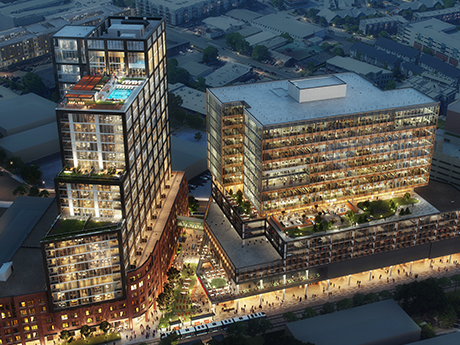In the wake of the COVID-19 pandemic, Charlotte’s retail segment has experienced a remarkable revitalization, fueled by a convergence of factors that have reinvigorated the city’s economic landscape. With a thriving job market, affordable cost of living and a surge in adaptive reuse, mixed-use and infill projects, Charlotte has become a hotbed for retail activity. As the city emerges from the challenges of the pandemic, it has embraced innovative approaches to urban development, transforming once-vacant spaces into vibrant hubs of commerce.
Several macro-economic trends have impacted retail growth in Charlotte. Population growth in the city has spurred an increase in consumer demand, leading to a vibrant retail market. In a May 18 article from the Charlotte Business Journal, it was noted Charlotte added more than 15,000 people to its population count between 2021 and 2022, the nation’s fifth-highest numeric increase during that span, according to the latest estimates from the U.S. Census Bureau. As more people choose to settle in Charlotte, the demand for goods and services has risen, prompting retailers and restaurants to expand their operations and invest in new locations.
Additionally, the rise of e-commerce and the shift toward online shopping have compelled retailers in Charlotte to adapt and enhance their digital presence. To remain competitive, many retailers have implemented omnichannel strategies, offering seamless online and offline shopping experiences. Overall, these macro-economic trends have created a favorable environment for retail growth in Charlotte, driving innovation and fostering a diverse and thriving retail landscape.
Of course, the retail concepts consumers frequent these days look a little different than they did even several years ago. In Charlotte and beyond, the segment is not seeing major new retail projects popping up in terms of gross leasable area (GLA), like the power centers that became so popular starting at the turn of the century. Rather, new retail construction is more focused on adaptive reuse, mixed-use projects and infill properties. We’re seeing industry players like RAM, Portman and Stiles incorporating ground-floor retail into office and multifamily towers, allowing more unique concepts to settle into newer developments primarily concentrated in South End, Uptown, FreeMoreWest and SouthPark.
In fact, Foundry Commercial is closely watching South End as a retail development hot spot, due primarily to growth in the multifamily and office segments. Additionally, social retail concepts — or “experiential retailers” such as Putt Shack, Pins Mechanical, Volli, Your 3rd Spot, Main Event, Sandbox VR and Sloomoo Academy — are taking over vacant opportunities in high-growth areas.
In assessing rent trend lines in the Charlotte metro, strong submarkets such as South End, SouthPark and Southeast Charlotte/Ballantyne are seeing an average of 2.5 to 3 percent annual rent growth. Other submarkets such as the University, Pineville and Matthews have remained steady with about 2 percent annual growth.
Although the market fundamentals are holding strong in the retail segment in Charlotte, Foundry is also watching the larger investment sales trends across the country and how those are impacting retailers and consumers alike. Looking at the broader United States, the retail investment sales market from a total transactions amount was down in 2022 from 2021 for a couple of reasons.
First, 2021 was a banner year, smashing all records as investors were still operating under record low interest rates. Second, 2022 began its slowdown toward the late third and fourth quarters as the debt capital markets started to get shaky. Through the first half of 2023, there are transactions closing, but there is a noted spread between buyer and seller expectations. As is often the case, it can take time for the market to recognize and narrow this spread.
Due to the strength of the segment, many retail owners are willing to wait out buyers, operating under the assumption that pricing will return to 2021 levels. For many owners, unless there is an urgency to sell such as a loan maturity or a partnership issue, they are willing to hold and operate their assets. Consequently, we expect transactions will be down in 2023 compared to 2022.
Private capital is still the main buyer of retail properties. In general, the market on the seller and buyer side comprises approximately 60 percent private capital, approximately 20 percent institutions and approximately 20 percent REITs. Institutions still largely serve as the net sellers, while REITs have been the net buyers through 2021, 2022 and 2023. However, institutional capital is certainly starting to come back to the market on the buy side, attributable to the positive leverage that can still be achieved in retail at acquisition, compared to other product types.
A combination of factors underscores the strength of Charlotte’s retail segment, not the least of which is that retail fundamentals are proven and strong. While retail — especially that which relied on foot traffic — may have faltered during the pandemic, sight lines look solid heading into the future.
— By Keely Hines, Senior Vice President, and Matthew Gallo, Managing Director of Retail Development and Investments, Foundry Commercial. This article was originally published in the June 2023 issue of Southeast Real Estate Business.


